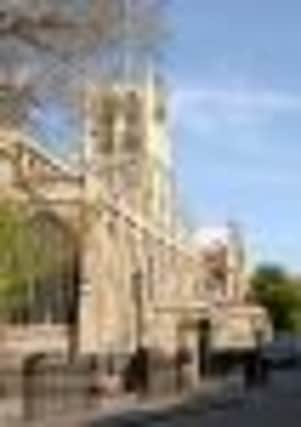City story revealed through eyes of an artist


And Frederick Schultz Smith’s almost frantic efforts to record Hull’s urban landscape in a collection of highly detailed drawings have ensured the city he knew more than 100 years ago has not been lost entirely.
So sensitive are his pictures – in pencil and ink and some in watercolour – that they have not been shown since the 1980s, but a new exhibition opening on Monday could bring a fresh appreciation of his art, and of Hull’s architectural development.
Advertisement
Hide AdAdvertisement
Hide AdThe display, FS Smith’s Hull – Then and Now, features 35 original drawings and will give visitors to Hull’s Maritime Museum the chance to see how much the city has changed as they are being placed alongside contemporary photographs of Hull today.


Smith’s pictures offer a snapshot of city streets in the Victorian era before street photography became common. The capture Hull before it underwent dramatic change as a result of demolition, regeneration, suburban expansion, and poignantly, on the 70th anniversary of the Blitz, before it was largely flattened by devastating Second World War air raids – when 94 per cent of homes were damaged.
Assistant curator of projects Susan Capes, at Hull Council, which holds about 800 of Smith’s drawings, said: “Smith tended to draw new buildings or buildings that were about to be demolished, so in many ways he was tracking the development of the city.
“Some of the drawings are so small and in such detail that we can only wonder how he managed to create them.
Advertisement
Hide AdAdvertisement
Hide Ad“The exhibition intends to inspire people to look again at the buildings around them and reconnect with the city’s proud heritage. We hope it will help communities across the city to see some of the architectural gems on their doorstep.”
Some of the drawings are so intricate that staff have included a magnifying glass in the exhibition to aid their viewing.
Smith, who was born in Worthing, Sussex, on May 25, 1859, and moved to Hull as a child, was commissioned to draw many of his pictures by Charles Fewster, a partner in a local paint manufacturing firm and a city councillor, who was known as a collector of city guides, manuscripts, maps, books and directories.
Smith became a familiar figure around street corners, sketching away with his left hand moving as one account has it with “lightning rapidity”.
Advertisement
Hide AdAdvertisement
Hide AdThis would often be a first draft which the artist would then taken home to develop into detail.
He created the impression of a man consumed by his work.
Miss Capes said: “We think he was well known for sitting in the street sketching and was familiar across Hull. People would go past but Smith wouldn’t see them; he was so focused on his drawing.”
Such was Smith’s devotion to disappearing buildings that his presence at a particular location often signalled its demise.
He drew what was believed to be the city’s oldest building – the 14th century King’s Head Inn, in High Street – in a picture dated 1905, the year it was knocked down.
Advertisement
Hide AdAdvertisement
Hide AdMore observant viewers may notice that Smith’s pictures also chart his own decline.
Miss Capes said: “His most detailed drawings are from the 1880s to 1890s, and in the later 1900s it becomes more sketchy so you can tell his eyesight was deteriorating.”
Miss Capes said Smith, who died aged 66 in 1925, had left a remarkable legacy. “It’s quite unique for the city,” she said.
The exhibition runs until September 11.